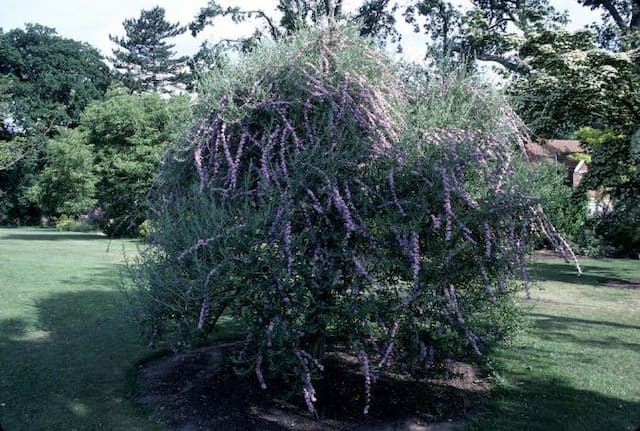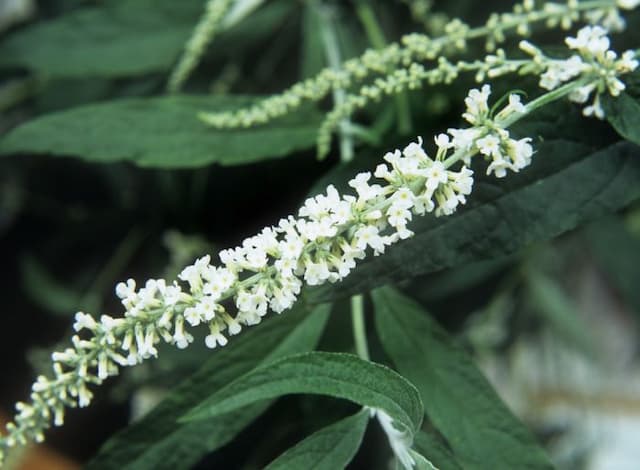Olympic Mullein Verbascum olympicum

ABOUT
Verbascum olympicum, commonly known as Olympic mullein, is a striking perennial plant that makes a bold impression in any garden setting. The foliage of the Olympic mullein forms a basal rosette characterized by large, woolly, gray-green leaves that are oblong to lance-shaped, with a slightly ruffled and felt-like texture. Rising above the foliage, the Olympic mullein produces a remarkable floral spike that carries abundant saucer-shaped flowers. These blooms are usually bright yellow, creating a vibrant contrast against the soft gray-green of the leaves. Each flower is comprised of five rounded petals that surround a prominent central stamen, giving the blossom a distinctive and eye-catching appearance. The profusion of sunny flowers not only adds a splash of color but also attracts various pollinators like bees and butterflies, which find the plant irresistible. The overall appearance of Olympic mullein, with its combination of textural foliage and attention-grabbing flowers, makes it a favorite choice for gardeners looking to add a touch of drama to their landscapes.
About this plant
 Names
NamesFamily
Scrophulariaceae
Synonyms
Olympic Mullein
Common names
Verbascum olympicum.
 Toxicity
ToxicityTo humans
Verbascum olympicum, commonly known as Olympic mullein, is not typically regarded as a toxic plant to humans. There is no widespread documentation on the toxicity of this specific species of mullein when ingested by humans. However, caution should be exercised because different individuals can have varying sensitivities to plants, and the possibility of allergic reactions or irritation cannot be completely ruled out. If any part of the plant is ingested and adverse symptoms occur, it is important to seek medical attention.
To pets
Olympic mullein is also not commonly recognized as a toxic plant to pets. There is limited evidence to suggest significant toxicity of Verbascum olympicum to pets such as cats and dogs. Nonetheless, ingestion of this plant may potentially cause mild stomach upset in some animals due to the unfamiliarity of the plant material in their diet. If a pet ingests Olympic mullein and displays any symptoms of distress, it is advisable to consult a veterinarian.
 Characteristics
CharacteristicsLife cycle
Biennials
Foliage type
Deciduous
Color of leaves
Green
Flower color
Yellow
Height
6 feet (1.8 meters)
Spread
2 feet (0.6 meters)
Plant type
Herb
Hardiness zones
5
Native area
Mediterranean
Benefits
 General Benefits
General Benefits- Decorative Appeal: Verbascum olympicum, also known as Olympic mullein, has tall, striking flower spikes that make it an eye-catching addition to any garden or landscape.
- Drought Tolerance: Olympic mullein is well-adapted to dry conditions, making it suitable for xeriscaping and gardens with low water availability.
- Pollinator Attraction: The flowers of Verbascum olympicum attract bees, butterflies, and other beneficial insects, supporting local biodiversity.
- Low Maintenance: Olympic mullein requires minimal care, making it a good choice for beginner gardeners or those seeking low-maintenance landscaping options.
- Soil Improvement: Like many mulleins, Verbascum olympicum can help improve soil quality by breaking up compacted soil with its deep roots.
- Year-Round Interest: With its evergreen foliage, Verbascum olympicum provides visual interest in the garden throughout the year, even when not in bloom.
 Medical Properties
Medical Properties- Anti-inflammatory: Traditionally used to reduce inflammation.
- Antiseptic: Known for its potential to prevent infection by inhibiting the growth of microbes.
- Expectorant: May help in loosening phlegm in people with coughs or colds.
- Emollient: Can be soothing to the skin and mucous membranes.
- Astringent: Might be used to constrict tissues and can be applied to reduce bleeding from minor abrasions.
 Air-purifying Qualities
Air-purifying QualitiesThis plant is not specifically known for air purifying qualities.
 Other Uses
Other Uses- Fish poison - In some traditional practices, compounds from Verbascum olympicum were used to temporarily stun fish, making them easier to catch.
- Torch material - The dried stalks of this plant can be soaked in fats or oils and used as torches, due to their flammable nature.
- Natural dye - The flowers of the Olympic mullein have been used to produce a yellow to greenish dye for fabrics.
- Candle wicks - The plant fibers are sometimes used in making candle wicks due to their durability when treated properly.
- Insulation material - The downy leaves can be used as a natural insulator in traditional building practices, to keep homes warm.
- Gardening aid - The plant is grown by some gardeners as a decoy to lure slugs away from other plants since slugs are attracted to its mucilaginous properties.
- Livestock feed - Although not the first choice, dry stems and leaves of Olympic mullein can be used as forage for livestock during scarcity.
- Folklore rituals - Verbascum olympicum may be incorporated into various ceremonial or ritualistic practices due to its perceived magical properties in some cultures.
- Soil conditioner - Decomposing Olympic mullein plants can contribute to soil fertility by adding organic matter and beneficial nutrients back into the soil.
- Sunscreen - Historically, the plant's sap has been used as a rudimentary sunscreen by some pastoralist communities.
Interesting Facts
 Feng Shui
Feng ShuiThe Olympic Mullein is not used in Feng Shui practice.
 Zodiac Sign Compitability
Zodiac Sign CompitabilityThe Olympic Mullein is not used in astrology practice.
 Plant Symbolism
Plant Symbolism- Healing and Medicinal Properties: Verbascum olympicum, commonly known as "Olympian Mullein," has traditionally been associated with healing due to its use in herbal medicine to treat various ailments such as respiratory disorders and skin conditions.
- Protection: The thick, velvety leaves of Olympian Mullein are believed to symbolize protection and safety, possibly because they have been used historically to line shoes and gloves to provide insulation and protection.
- Love Divination: In some cultural folklore, the flowers of the Olympian Mullein were used in love divinations, representing the plant's association with matters of the heart and the prediction of romantic outcomes.
- Light and Clarity: The tall, candle-like stalks of the Olympian Mullein are reminiscent of a torch, symbolizing guidance, light, and clarity in one's journey through darkness or confusion.
 Water
WaterFor Olympic Mullein, it's essential to allow the soil to dry out between waterings, as this plant prefers a drier soil condition. Generally, watering once a week during the growing season should be sufficient, adjusting for rainfall, and more sparingly in the winter. When you do water, aim for about 1 gallon per plant to ensure deep watering that encourages root growth, depending on the size and maturity of the plant. Overwatering can lead to root rot, so it's important not to let the plant sit in soggy soil.
 Light
LightOlympic Mullein thrives in full sun conditions, meaning it should receive at least 6 to 8 hours of direct sunlight per day. The plant is best situated in a spot where it can bask in the sun's rays unhindered, as ample sunlight is crucial for the growth and blooming of this species. Partially shaded areas can lead to less vigorous growth and fewer blooms.
 Temperature
TemperatureOlympic Mullein performs well in a wide range of temperatures but prefers warmer conditions. It can withstand minimum temperatures down to about 20°F, but it grows optimally when temperatures are between 60°F and 80°F. Ensure that the plant is not subjected to prolonged periods of frost to avoid damage.
 Pruning
PruningFor Olympic Mullein, pruning is done to remove spent flowers and encourage a second bloom. Deadheading, or cutting off the faded flower spikes, can also prevent the plant from self-seeding excessively. The best time for pruning is right after the first flowering, usually in mid-summer. Additionally, removing damaged or diseased foliage as needed helps maintain plant health.
 Cleaning
CleaningAs needed
 Soil
SoilThe Olympic Mullein requires well-draining soil with a sandy or rocky texture, enhanced with organic matter for nutrient retention. The best soil mix comprises equal parts of sand, loam, and compost. Aim for a slightly alkaline soil pH, between 6.8 and 7.5.
 Repotting
RepottingOlympic Mullein rarely needs repotting as it is often grown as a biennial; if grown as a perennial, consider repotting every two to three years, or if it outgrows its container.
 Humidity & Misting
Humidity & MistingOlympic Mullein tolerates a wide range of humidity levels but prefers drier conditions. It thrives best in low to moderate humidity environments, making it suitable for average home or garden settings.
 Suitable locations
Suitable locationsIndoor
Ensure full sun, well-draining soil, minimal water, and sparse fertilization.
Outdoor
Plant in full sun, well-drained soil, space 45cm apart; low maintenance.
Hardiness zone
5-9 USDA
 Life cycle
Life cycleVerbascum olympicum, commonly known as Greek Mullein, begins its life cycle as a seed that germinates typically in early spring when the soil temperature and moisture levels are suitable. Following germination, the seedling establishes a rosette of basal leaves, entering a vegetative growth stage that can last for one or more seasons. During this time, Greek Mullein invests energy in developing a strong root system and accumulating nutrients. The plant then progresses to the reproductive stage, typically in its second year, where it sends up a tall flowering stalk that can reach up to 2 meters in height with dense clusters of yellow flowers that are pollinated by insects. After pollination, the plant produces capsules containing numerous seeds, which are dispersed by wind or contact with animals. Eventually, the plant completes its life cycle by senescing and dying, leaving the seeds to initiate the next generation.
 Propogation
PropogationPropogation time
Spring to Summer
Verbascum olympicum, commonly known as Olympic mullein, is a perennial plant typically propagated by seeds. The ideal time for sowing these seeds is in late winter to early spring. The most popular method of propagation is by seed, which is both easy and efficient. To propagate Olympic mullein by seed, simply scatter the seeds over a well-draining soil mix and lightly press them into the surface, as they need light to germinate. Keep the soil moist but not waterlogged, and position the seed tray in a bright, warm location. Germination usually occurs within two to three weeks. Once the seedlings are large enough to handle, they can be transplanted into individual pots before eventually being moved outdoors after the risk of frost has passed.



![Butterfly bush [Florence]](/_next/image?url=https%3A%2F%2Fplants-admin.emdemapps.com%2Fimages%2Fplants%2F%2Fimages%2F604b5f52d7bb1.png&w=640&q=75)
![Butterfly bush [Marbled White]](/_next/image?url=https%3A%2F%2Fplants-admin.emdemapps.com%2Fimages%2Fplants%2F%2Fimages%2F604b63353832a.png&w=640&q=75)
![Butterfly bush [Nanho Blue]](/_next/image?url=https%3A%2F%2Fplants-admin.emdemapps.com%2Fimages%2Fplants%2F%2Fimages%2F604b55d0a6d2d.png&w=640&q=75)



